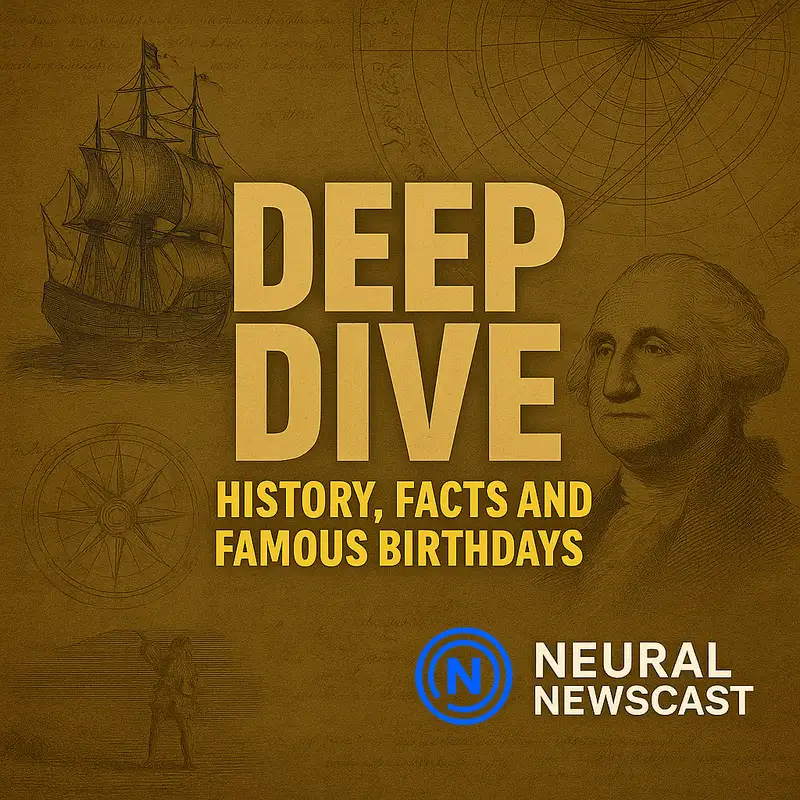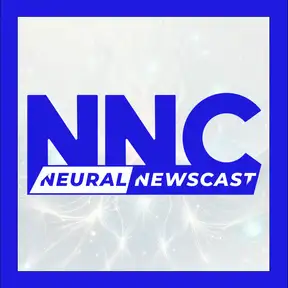Deep Dive: From Morse to Picasso: Innovations That Shaped Our World - May 24, 2025
This is NNC, Neural Newscast, online at NNewscast.com.
Get ready for a deep dive from Neural Newscast.
I'm Lena, and Nathaniel is here with me as we delve into today's subjects.
On this day, back in 1844, we witnessed a groundbreaking moment that quite literally changed the conversation,
Samuel Morse's demonstration of the telegraph.
Can you imagine the sheer excitement of seeing What Hath God wrought,
being transmitted from Washington, D.C. to Baltimore?
It's almost like witnessing the first email being sent.
And Lena, it was a leap that transformed how we perceived distance and communication.
The telegraph turned miles into mere seconds.
Exactly. And it wasn't just about connecting two cities,
it was the first time people realized that ideas could travel faster than a human being.
Before this, messages traveled no faster than a horse could gallop.
Right.
The telegraph was the first step in a long journey to the instant communication we enjoy today.
This was the internet's ancestor, if you think about it.
And it wasn't just about speed. It also influenced cultural and societal shifts.
Suddenly, information was more accessible, and that transformed journalism, politics, and even art.
Writers could share ideas across continents in a fraction of the time it used to take.
Fascinating, isn't it? It also laid the groundwork for technology as we know it.
Morse code even inspired early computer code.
It makes you appreciate how such a simple invention can have such far-reaching implications.
Morse's demonstration was more than a technological marvel.
It was a promise of things to come.
It hinted at a world where boundaries would mean less and shared human experience would grow stronger.
And think about how it spurred innovation.
The idea of transmitting signals over wires led to telephone lines, radio waves, and eventually
the fiber optics we rely on today.
It's like a domino effect of invention.
And each step along the way reflected the society of its time, telegraphs during the industrial
age radio in the age of mass media, and now digital communication in our information age.
It's a testament to how intertwined technology and culture really are.
This intersection of art and science is where change happens.
We often forget how one small step in one field can ripple into every aspect of life.
Precisely.
It reminds me of how artists in the 19th century captured the dynamism and possibilities of a rapidly changing world,
much like how contemporary artists are grappling with our digital realities.
It's this ongoing dialogue between disciplines that keeps pushing humanity forward.
Morse's telegraph was just a tool.
It was a catalyst for the modern age, an age we're still exploring and expanding.
And it all started with that one message.
What hath God wrought?
A question perhaps, but also a declaration of the future.
Today we celebrate the birthdays of Pablo Picasso, 1881, Sylvia Plath, 1932, and John Cleese, 1939.
Quite a lineup.
Imagine having Picasso and Plath at the same dinner table.
The conversation would be fascinating.
Absolutely.
Let's delve into Pablo Picasso, shall we?
No.
His influence on modern art is just monumental.
Born in 1881, right at the crossroads of the 19th and 20th centuries,
he completely revolutionized the way we perceive art.
Right, with cubism.
It's fascinating how he approached perspective, breaking it down into geometric shapes,
almost like he was redefining the laws of visual physics.
and his ability to traverse different styles is extraordinary.
From the blue period's melancholic hues to the joyful vibrancy of the rose period,
and then onto cubism, he was not just an artist, but an innovator.
You know, his scientific approach to form and structure also aligns with the technological advances of his time.
It's like he was visually experimenting with dimensions, much like quantum physicists were doing mathematically.
That's a brilliant parallel, Nathaniel.
And let's not forget Guernica.
It's more than just a painting, it's a powerful political statement.
Picasso created it in response to the bombing of a Basque town during the Spanish Civil War.
The raw emotion in the chaos of the figures is haunting.
That's true.
Glernika remains a poignant reminder of the horrors of war, still relevant today.
I read somewhere that he used to say, painting is not done to decorate apartments.
It is an instrument of war.
It's quite a declaration of intent.
Indeed.
And beyond his artistic genius, he lived such a colorful life.
His charisma and our fascination with his personal life full of dramatic love affairs and controversies add to his larger-than-life aura.
I find it interesting that he was a fervent communicator through various mediums.
He didn't just paint, he sculpted, he wrote.
It was like channeling all possible means to express the depths of his thoughts and emotions.
Yes, and that multidisciplinary approach is something we see influencing contemporary artists even now.
He really set a precedent for exploring and blending various forms of art.
His legacy is not just in what he created, but in how he gave future artist permission to break
boundaries. In a sense, he opened the gallery doors to the modern art world we know today.
Precisely, Picasso's legacy is ever present, reminding us of the power of art to challenge, provoke, and inspire.
His fearless creativity still echoes through the corridors of time.
Stay with us, more deep dive exploring coming up.
Stay tuned to NNC for unbiased daily news summaries.
Subscribe and explore our archives at NNewscast.com.
This is Neural Newscast.
Thanks for staying with us on Neural Newscast Deep Dive. Let's get back to our discussion.
Nathaniel, did you know that Sarah Good, a self-taught inventor from the late 19th century,
was one of the first black women in the United States to receive a patent?
Really? That's impressive, Lena. I wasn't aware of her story. What did she invent?
She invented the folding cabinet bed in 1885.
It was a space-saving piece of furniture
that could transform from a roll-top desk into a bed,
Considering the cramped living conditions of urban areas at the time, it was quite a practical innovation.
Ingenious. It's fascinating how the challenges of living spaces in bustling cities like Chicago,
where good lived, stimulated such creative solutions. Her design must have been a real game changer for many families.
Absolutely, Nathaniel, especially for the working-class families in Chicago who often lived in one-room apartments.
Her invention allowed them to make the most of their limited space.
It wasn't just a clever design, it was a solution born out of necessity.
And it's so relevant even today, isn't it?
The concept of multifunctional furniture is quite popular now, especially with the rise of minimalistic and compact living trends.
I find it remarkable how innovations like goods can transcend time.
Indeed.
What strikes me most is how good, as a Black woman in the post-Civil War era,
navigated such challenging social and economic landscapes to achieve this.
It speaks volumes about her tenacity and vision.
Definitely.
The late 1800s were a turbulent time, especially for African Americans,
to push through societal barriers and secure a patent back then required immense perseverance.
Her story is a testament to her resilience.
Speaking of resilience, it's heartening to see that her legacy continues to inspire.
There are so many young inventors today who look up to pioneers like Good.
Her story is a beacon for those who face their own barriers.
Absolutely, Lena.
It's amazing how stories like hers can provide a sense of continuity and inspiration through the ages,
especially within STEM fields where diversity is still an ongoing issue.
These historical figures play such a crucial role in encouraging future generations.
Yes, and it reminds us that the history of innovation is richer and more diverse than it sometimes appears.
Often it's individuals like Sarah Good who paved the way for broader inclusion and progress.
So true.
And as science and culture continue to intermingle, we get to see the fruits of this diversity come to life in all kinds of unexpected and wonderful ways.
It's a continuous evolution.
Precisely. There's so much to learn from these intersections of art, culture, and science,
and from stories like Sarah Goods, which reflect the broader tapestry of human ingenuity.
Thanks for tuning into our deep dive. I'm Nathaniel and from Lena and the Neural Newscast team.
We'll see you next time.
You have been listening to NNC. Visit NNewscast.com for more episodes and deep dives.
Neural Newscast combines real voice recordings with synthesized voices to enable prompt production without sacrificing quality.
All content is generated using advanced AI algorithms developed by a human and undergoes fact-checking and human review prior to release.
While we strive for factual, non-biased reporting and actively work to prevent AI hallucinations,
AI-generated content can occasionally contain errors.
Listeners are encouraged to verify critical information from trusted sources.
For more details on our AI transparency policies, visit nnewscast.com.

